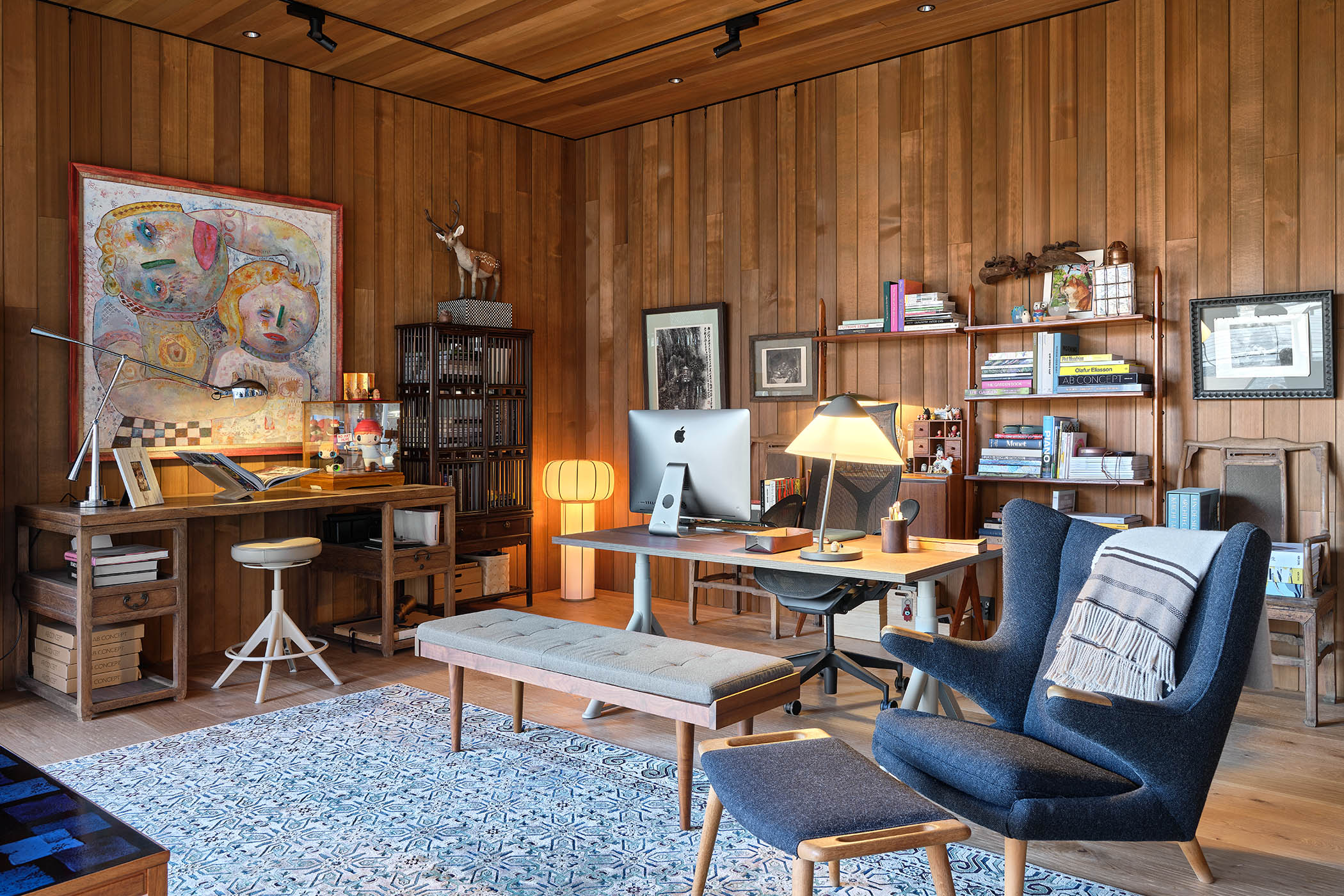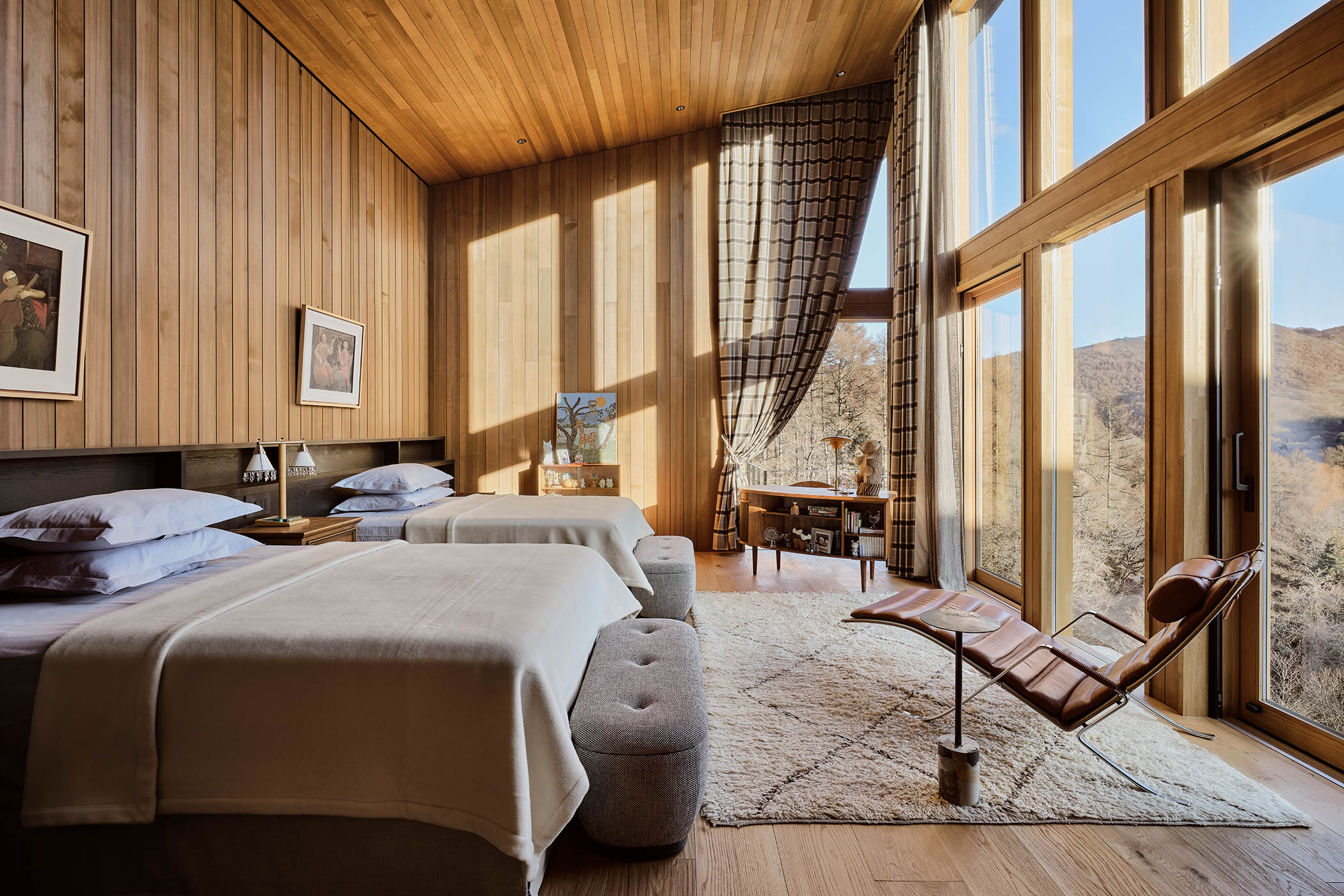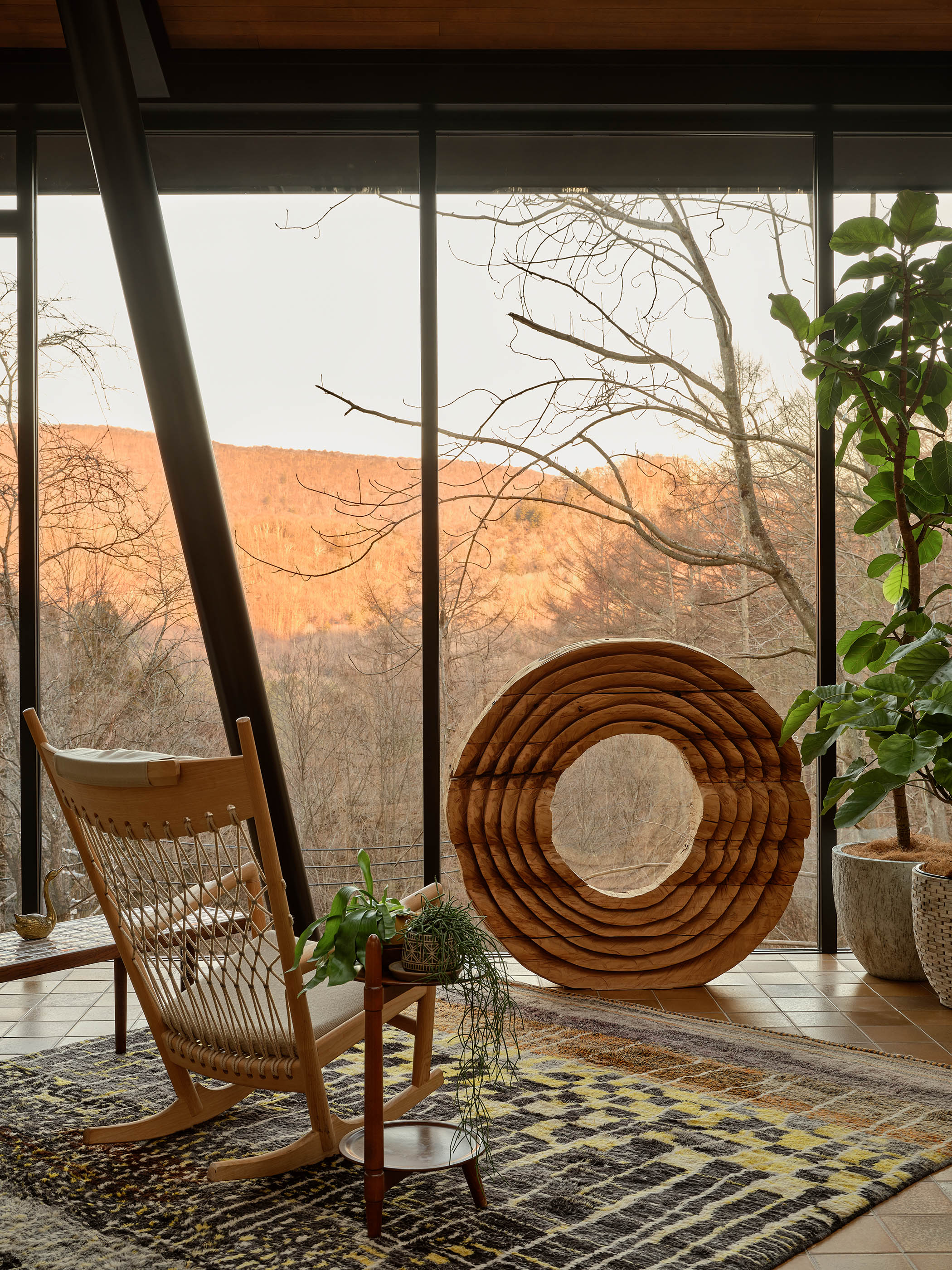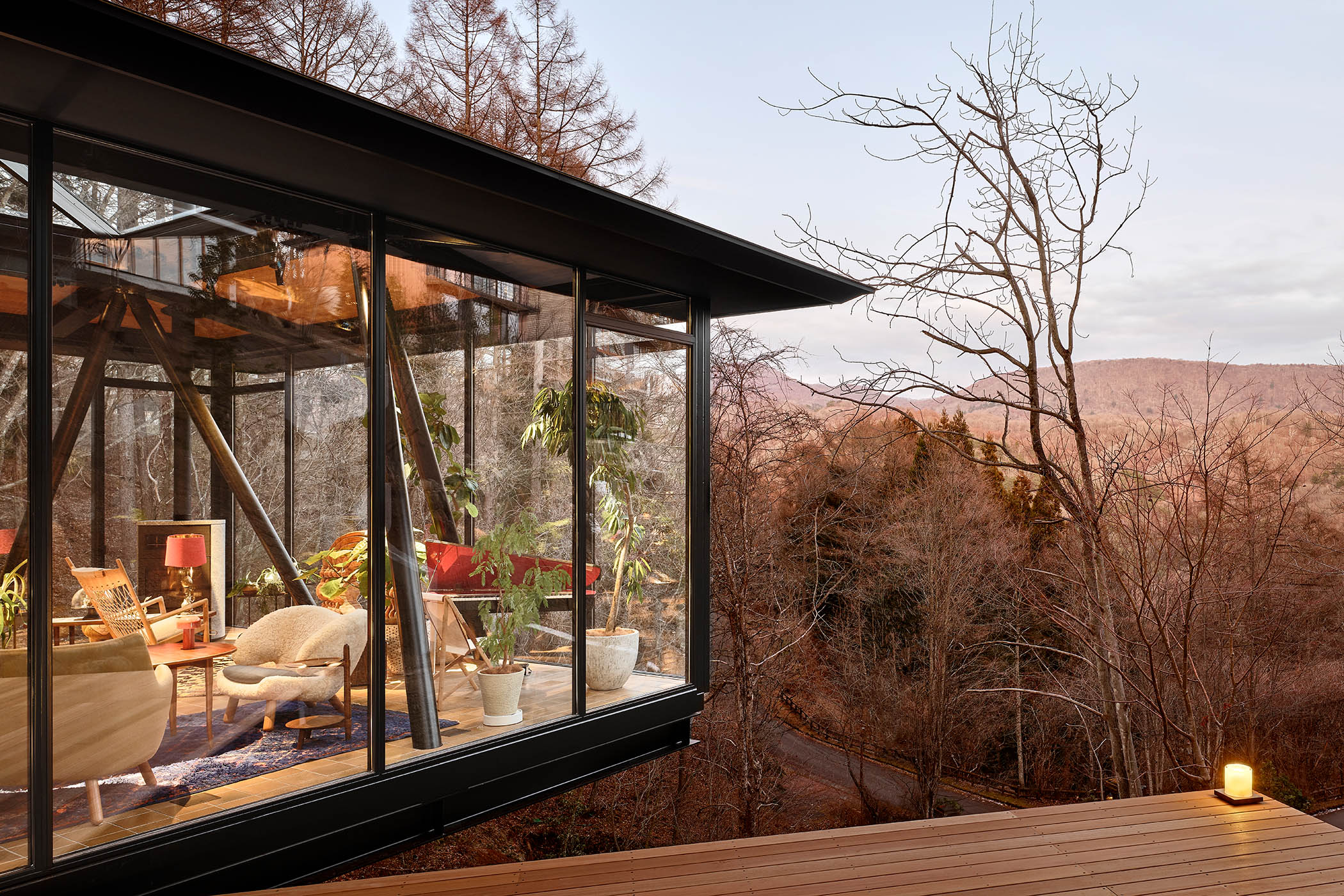When Ed Ng and his partner Terence Ngan visited Karuizawa for the first time two decades ago, they had no idea the Japanese alpine town would eventually become their home. Back then, the couple, co-founders of international design and architecture studio AB Concept, were Hong Kong-based city dwellers escaping to Japan’s countryside for a tranquil weekend. Today, Karuizawa is not just a retreat but a full-time base. The couple have built their own unique residence here, Itsu Sho Sha, a sprawling multi-building compound that is part sanctuary, part architectural experiment.
At 1,000m above sea level, Karuizawa, just an hour from Tokyo on the Shinkansen, is regarded as the Hamptons of Japan. With cooler temperatures than the city and four distinct seasons – blanket snow in winter, bursts of cherry blossom in spring – it has long been a haven for creatives, most famously John Lennon and Yoko Ono, who spent several summers here at Ono’s family home.

‘We didn’t want anything elaborate’: rooms are simple, but filled with art and furniture from Asia and Europe
Ng and Ngan’s love affair with the area began when they stayed at the newly opened Hoshinoya resort, the Japanese hospitality brand that put Karuizawa on the map. “It was November and freezing,” Ng recalls. “But it was beautiful. It felt like another world.”
The contrast was intoxicating. Soon, monthly visits became fortnightly tours. “Then we started thinking of getting a holiday home here,” he adds. Their first, in 2017, was modest: a two-storey, three-bedroom timber cottage tucked into a slope. “It was great, but because we often had friends to visit, we started to feel we needed more space.”
The opportunity to expand came a year later. A neighbouring plot of land, three times the size of their home’s footprint, became available, and by then the pair had become accustomed to the town’s natural rhythm. “We got to know the neighbourhood, the landscape, how the weather changes,” says Ng. “So when we bought the land, we pretty much knew what we wanted to do.” This time they wanted more than a cottage. But rather than one grand house, the pair conceived something more like a hamlet – four smaller, interlinked buildings arranged along the slope, each with a distinct purpose. “I didn’t want to build a huge mansion that didn’t fit in with the landscape,” explains Ng. The original house, they decided, would become a guesthouse, while a newly built home would be the heart of their mountain life. In addition, there was a building to house a gym and garage, essential for the area’s heavy snowfalls, and a sizable greenhouse to provide year-round foliage.

Lie back: the bedroom, where windows look straight on to the surrounding forest
The entire plot sits at the foot of Mount Asama, one of Japan’s most active volcanoes, a factor that needed consideration alongside the country’s propensity for earthquakes, so the couple called on renowned architect Kengo Kuma for masterful engineering and to guide the creation of the structure. While the couple’s design studio collaborates with some of the world’s glitziest hotel brands, including Four Seasons, Mandarin Oriental and Ritz Carlton, they decided on an understated approach for themselves. “We didn’t want anything elaborate,” says Ng. “The real star is the landscape surrounding us.”
The main house, built largely in Japanese cedar, is the clearest expression of this simplicity at the core of the couple’s design philosophy. Instead of carving away at the slope, they embraced it – a reinforced concrete base anchors the structure like a bridge. The effect is a house that seems to hover between the forest and the sky. The ground level leads to the upper floor with the kitchen, dining, main bedroom and living room beneath a sloping roof that rises to 5m. “By keeping the existing contour line of the slope, we’re able to enjoy an unobscured view of the forest,” says Ng.

Work of art: the landscape exists as a striking backdrop to many pieces of art
If the architecture reflects Japanese restraint, the interiors reveal a lifetime of collecting. Since getting together 30 years ago, Ng and Ngan have gathered furniture and art from across Asia and Europe. “We’ve always been very fond of furniture. It doesn’t matter if it is Scandinavian midcentury or Chinese Ming,” says Ng. In the guesthouse, Oriental antiques are partnered with chairs and stools from Japanese-American architect George Nakashima, a Gio Ponti sideboard and a Frank Lloyd Wright lamp crafted in Japanese paulownia.
The living room has floor-to-ceiling windows and is anchored by bold focal points such as a vintage Preciosa chandelier from a 1970s Prague hotel and a bespoke fireplace by a local ironsmith, combined with considered pieces from Hans Wegner and Edward Wormley. At the centre lies a hand-knotted cream Tai Ping rug designed by Ng and Ngan, inspired by Ng’s grandmother. “I have fond memories of watching her knit,” he says. “I was fascinated by how she created all the cabling without even looking. I wanted to translate that texture into a carpet.”

‘The real star is the landscape’: Itsu Sho Sha, built largely from Japanese cedar, retained the contour line of the alpine slope it’s situated on
When not travelling – AB Concept has offices in Hong Kong, Taipei and Milan, and a roster of clients in 16 countries – Ng flits between his study, the living room and the greenhouse. “The greenhouse is somewhere I love because there are no distractions, just a little music player. It’s where I like to do my creative work,” he says.
Although the couple had envisioned the project as a retirement plan, they were stranded here during the pandemic and then realised they didn’t want to leave. “We brought our two dogs back from Hong Kong and knew it was official – this was going to be our main home,” says Ng.
While Hong Kong was about the hustle and bustle, Karuizawa is the opposite. “Here, you actually want to stay in, relaxing and cooking together. It’s a slower pace of life,” he continues. Gardening has become a new and unexpected passion. The couple have planted hundreds of trees across the site, gradually transforming bare soil into a lush forest. “Watching something you have planted grow is very rewarding.”
